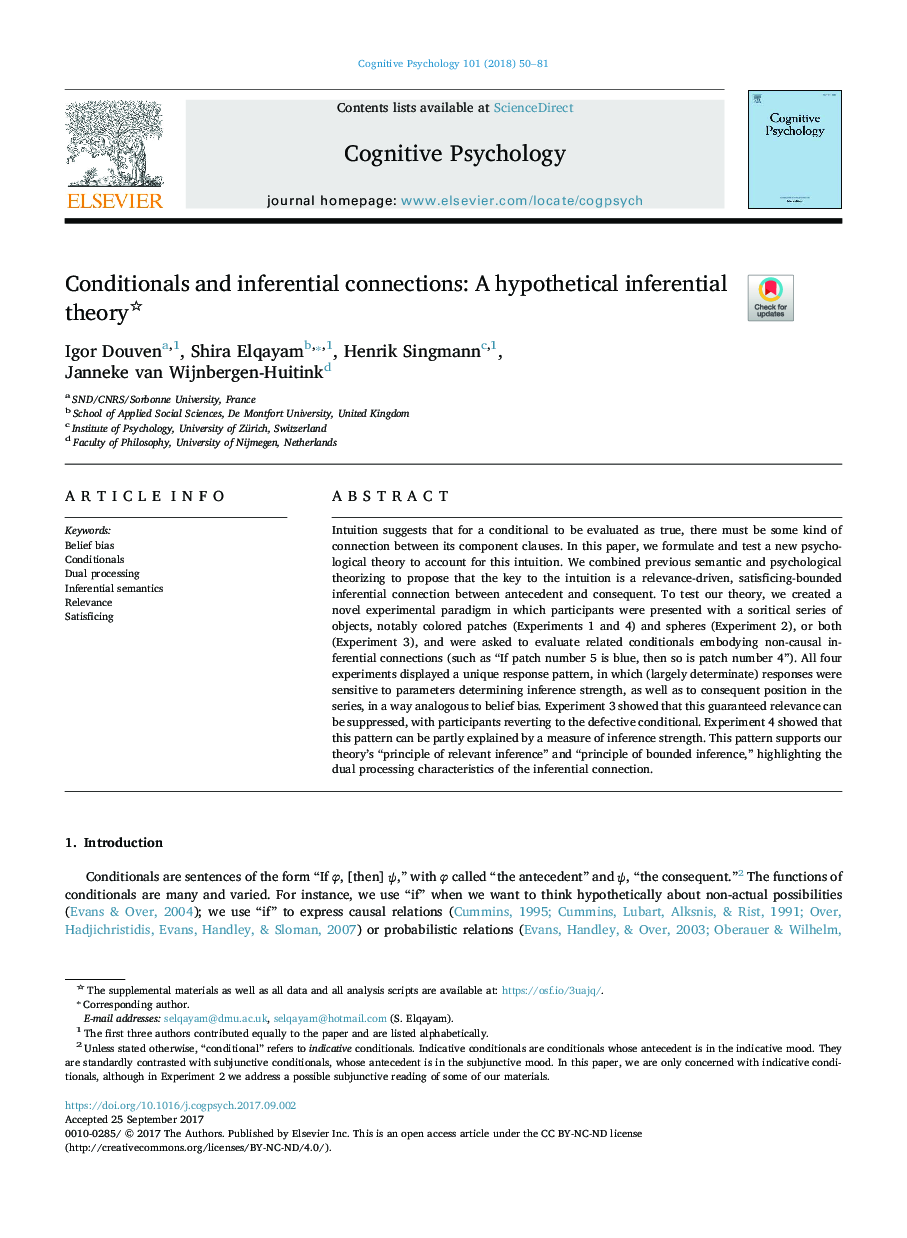| Article ID | Journal | Published Year | Pages | File Type |
|---|---|---|---|---|
| 7272663 | Cognitive Psychology | 2018 | 32 Pages |
Abstract
Intuition suggests that for a conditional to be evaluated as true, there must be some kind of connection between its component clauses. In this paper, we formulate and test a new psychological theory to account for this intuition. We combined previous semantic and psychological theorizing to propose that the key to the intuition is a relevance-driven, satisficing-bounded inferential connection between antecedent and consequent. To test our theory, we created a novel experimental paradigm in which participants were presented with a soritical series of objects, notably colored patches (Experiments 1 and 4) and spheres (Experiment 2), or both (Experiment 3), and were asked to evaluate related conditionals embodying non-causal inferential connections (such as “If patch number 5 is blue, then so is patch number 4”). All four experiments displayed a unique response pattern, in which (largely determinate) responses were sensitive to parameters determining inference strength, as well as to consequent position in the series, in a way analogous to belief bias. Experiment 3 showed that this guaranteed relevance can be suppressed, with participants reverting to the defective conditional. Experiment 4 showed that this pattern can be partly explained by a measure of inference strength. This pattern supports our theory's “principle of relevant inference” and “principle of bounded inference,” highlighting the dual processing characteristics of the inferential connection.
Related Topics
Life Sciences
Neuroscience
Cognitive Neuroscience
Authors
Igor Douven, Shira Elqayam, Henrik Singmann, Janneke van Wijnbergen-Huitink,
